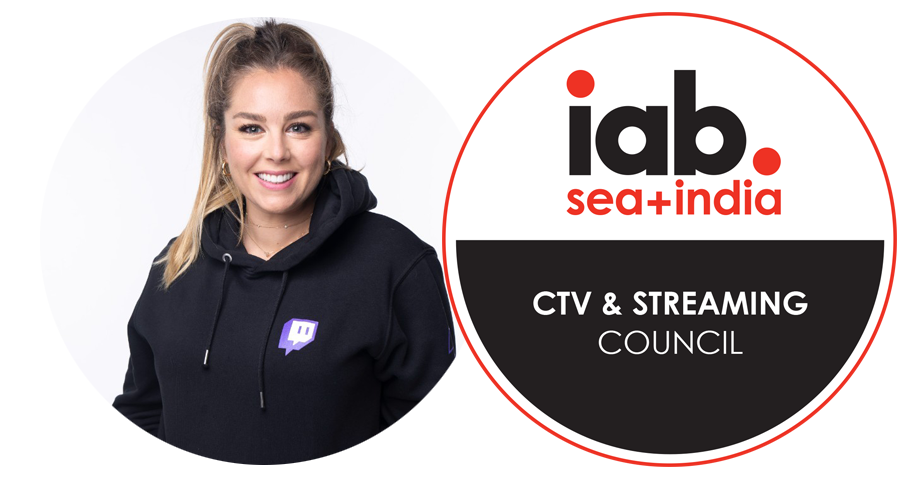
White Paper | Author: Tara Crosby Twitch Advertising
The secret to live streaming is to never stop focusing on your audience. The same SHOULD be said for measuring its success for brands.
In simple terms, live streaming makes it possible to create and share content as it happens.
There is no doubt that the appetite for Live streaming, both as a viewer and as a creator has exploded over the past 27 months. Countless opportunities exist to do both and we see a future where everyone’s appetite for new content can be satisfied. Brands have only just begun to see the power of Live streaming as an opportunity to meet their customers in new and surprising ways. Brands can bring content to life in a community-focused setting and to build new audiences in even the most hard to reach groups.
However, a secondary challenge has emerged for marketers and brands, as they embark on this new content… How do I know if it’s working? How can I measure its success? How can I demonstrate success internally and externally? Ultimately, how can I secure more budget for Live streaming marketing?
The answer is simple, when working on content strategies we always focus on what the audience wants to see and hear, we think about the audience first and we work backwards on how to best capture their attention. Marketers and brands must take that same approach to measuring Live streaming success.
Has my content surprised and delighted my audience? Am I building a fan base or new community through authentic content? Have I got their attention?
Welcome to the attention economy. Now, there is nothing new to this concept, advertisers have been trying to get their audience’s attention for decades, if not centuries. From the time Warren Beatty enjoyed a refreshing Coca Cola in Bonnie and Clyde, to the $7 million record invested in a 30 second ad during the Super Bowl in February this year.
Audience attention is a commodity and brands seek to capture it. The challenge with Live streaming is that brands must find a voice in a fragmented landscape, full of vastly different content, formats, creators and cohorts. These creators and their communities are fiercely loyal and protective of their platform and they will only let brands into the space when they are authentic, bring value and are respectful of their space. Brands should understand that they will need to gather communities across multiple sources and channels, and to lean on creators to build an authentic experience; and accept that this journey takes time.
When thinking about Live streaming and earning the attention economy, remember the following:
-
-
-
Attention economy goes hand in hand with the creator economy.
-
Live Streaming is different to other types of media therefore attention measurement, whether it is survey-based solutions or prediction-based solutions, needs to be configured to the unique advertising environment.
-
The amount of attention a brand needs is unique to overall campaign objectives and brand familiarity. A new to market brand will need to drive higher levels of attention to provoke a consumer response, and more consumer attention is required when striving to land a brand message.
-
Attention extends far beyond eyes on ads. Within live streaming environments there are both visual and audio messages being delivered, so focusing purely on ‘gaze’ metrics will not provide a full picture of the campaign impact.
-
Attention metrics need to be paired with other solutions to ensure brands can effectively measure impact.
-
Attention measurement is a broad term; however, most of the agency discussions around ‘Attention’ now go beyond viewability and focus on eye-tracking and engagement with the ads.
-
Attention economy based on eye tracking solutions is still very much in its infancy. There are a number of vendors that use different methodologies from which to choose.
-
There is no common understanding of attention measurement or industry standards to ensure brands, advertisers, agencies and media owners are comparing apples to apples and this needs to be tackled before metrics are adopted more broadly by the industry.
-
-
Investing in Live streaming is about community, creating brand equity through people and trusting in your brand value over time. The results are clear. Brands that are capturing attention are succeeding; they have built trust with their customers and ultimately at the point of purchase, they are the choice.
NXY Professional Makeup is a great example of a brand realising that their success was heavily linked to their growing video content brought to life through an army of grassroots beauty vloggers. What started out as a cult beauty brand, since sold to L’Oreal in 2014 for a reported $500 million.
No doubt this is a long game compared to old school click frenzy media, but it’s not about a race to the bottom, it’s about rising to the top.

